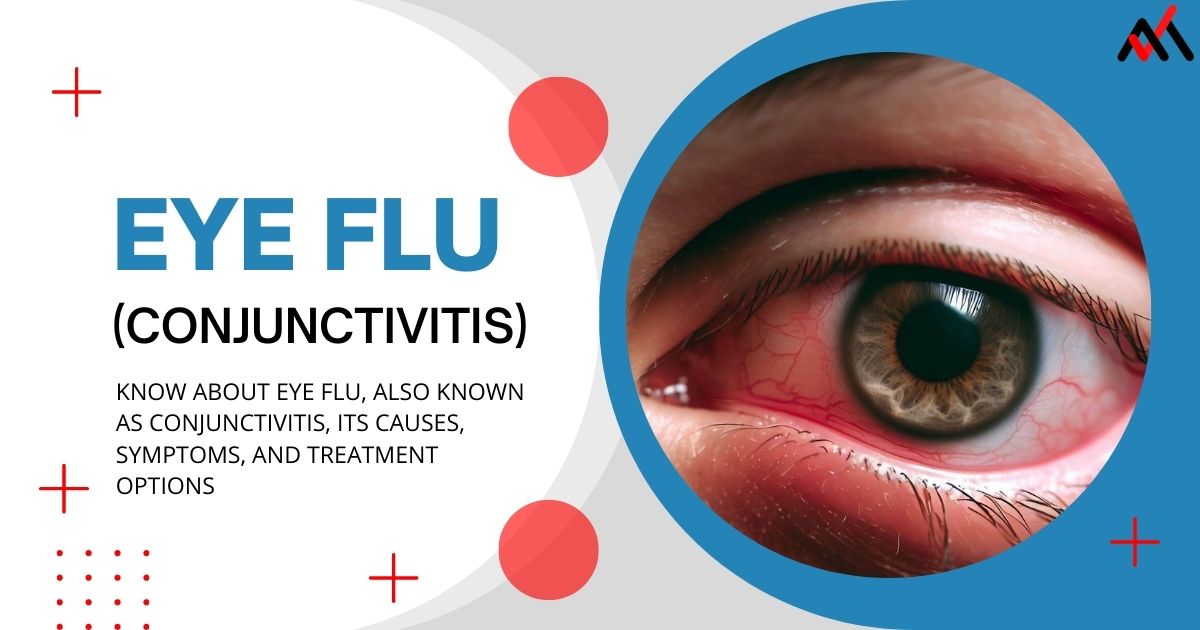The eyes, being the windows to the soul, are also vulnerable to various infections and diseases. One common ocular ailment that affects millions of people worldwide is eye flu, more formally known as conjunctivitis.
Conjunctivitis is an inflammation of the conjunctiva, the thin, transparent membrane that covers the white part of the eye and lines the inside of the eyelids. While eye flu is typically a mild and self-limiting condition, understanding its causes, symptoms, and treatment is crucial for timely intervention and prevention of its spread.
Page Index
Causes of Eye Flu (Conjunctivitis)
Eye flu can be caused by a variety of factors, including viruses, bacteria, allergens, and irritants. The most common types of conjunctivitis are:
- Viral Conjunctivitis: This form of conjunctivitis is highly contagious and is usually caused by adenoviruses. It often accompanies respiratory infections and spreads rapidly in crowded places like schools and workplaces.
- Bacterial Conjunctivitis: Bacterial infections, such as Staphylococcus aureus and Streptococcus pneumoniae, can cause bacterial conjunctivitis. It can occur as a secondary infection following a viral cold or flu.
- Allergic Conjunctivitis: Allergens like pollen, dust mites, pet dander, and certain chemicals can trigger an allergic reaction in the eyes, leading to allergic conjunctivitis. It is not contagious and often affects both eyes.
- Irritant Conjunctivitis: Exposure to irritants like smoke, fumes, chlorine, and foreign objects can irritate the eyes, resulting in irritant conjunctivitis. It is not infectious but can be uncomfortable.
Symptoms of Eye Flu (Conjunctivitis)
The signs and symptoms of eye flu may vary depending on the underlying cause, but some common indicators include:
- Redness: The whites of the eyes become noticeably reddened due to inflammation.
- Watery Discharge: Viral and allergic conjunctivitis often presents with a clear, watery discharge from the eyes.
- Yellow or Greenish Discharge: Bacterial conjunctivitis is characterized by a thick, yellow, or greenish discharge that can cause the eyelids to stick together, particularly upon waking up.
- Itching and Irritation: Allergic conjunctivitis typically leads to itching, burning, and a gritty sensation in the eyes.
- Sensitivity to Light: People with eye flu may experience photophobia or heightened sensitivity to light.
- Tearing: Excessive tearing, unrelated to emotions, can be a symptom of conjunctivitis.
- Swollen Eyelids: The eyelids may become swollen and puffy in some cases.
Treatment and Recovery
Conjunctivitis, commonly known as eye flu, can cause discomfort and irritation in the eyes. However, the good news is that in most cases, it is a self-limiting condition that resolves on its own within a specific period. Here are the different treatments and recovery methods based on the type of conjunctivitis:
Viral Conjunctivitis:
- Viral conjunctivitis is the most common type and usually clears up on its own within one to two weeks.
- Artificial tears or eye drops can be used to alleviate discomfort and keep the eyes lubricated.
- Applying a warm compress to the eyes can help soothe irritation.
Bacterial Conjunctivitis:
- Bacterial conjunctivitis may require antibiotic eye drops or ointments prescribed by a doctor to eliminate the infection.
- It is essential to complete the full course of antibiotics as prescribed to prevent the recurrence of the infection.
Allergic Conjunctivitis:
- Allergic conjunctivitis can be managed by using antihistamine eye drops to reduce inflammation and itching.
- Avoiding exposure to allergens such as pollen, dust, or pet dander can help prevent flare-ups.
Irritant Conjunctivitis:
- Identifying and avoiding irritants is the primary approach.
- Artificial tears can help soothe the eyes, and in severe cases, a doctor may prescribe steroid eye drops.
Remember, it is crucial not to self-medicate and consult an eye care professional for accurate diagnosis and appropriate treatment.
Home Remedies for Eye Flu
While seeking professional medical advice is crucial for treating eye flu, some effective home remedies can provide relief from discomfort and aid in the recovery process. Here are a few tried and tested home remedies:
- Cold Compress: Applying a cold compress to the affected eye can help reduce inflammation and soothe irritation. Use a clean cloth soaked in cold water and gently place it over the closed eyelid for a few minutes. Repeat as needed throughout the day.
- Warm Chamomile Tea Bags: Chamomile has soothing properties that can help alleviate redness and discomfort. Steep chamomile tea bags in hot water, let them cool slightly, and place them over closed eyes for 5-10 minutes.
- Cucumber Slices: Cucumber slices have a cooling effect that can help reduce swelling and provide relief from eye flu symptoms. Place thin slices of chilled cucumber over closed eyes for 10-15 minutes.
- Aloe Vera Gel: Aloe vera gel has anti-inflammatory and antimicrobial properties that can aid in soothing the eyes and promoting healing. Apply a small amount of pure aloe vera gel around the eyes, avoiding direct contact with the eyes.
- Honey-Water: Honey has natural antibacterial properties that can help fight infections. To use honey for the eyes, mix 2 teaspoons of honey in a glass of water and wash your eyes with this water. Doing this can help relieve pain and irritation in the eyes.
- Rose Water: Rose water is known for its calming and refreshing properties. It has antibacterial and antiseptic properties that can help fight infection-causing bacteria. Put two drops of rose water in each eye and close them for a minute to experience instant relief from pain and irritation.
- Potato Poultice: Potatoes have a cooling effect and can help reduce eye irritation. The properties present in potatoes can also help prevent eye infections. Cut the potatoes into thin pieces and place potato slices over your eyes before sleeping at night. Keep it on for about 10-15 minutes, then remove it to experience relief from swelling and pain in the eyes.
Remember, while these home remedies can provide temporary relief, they are not a substitute for professional medical advice. If the symptoms persist or worsen, it is essential to consult an eye care specialist for proper diagnosis and treatment.
Contagion and Prevention
Conjunctivitis is highly contagious and can spread rapidly, especially in crowded places or among close contacts. To prevent the spread of eye flu, individuals should take the following preventive measures:
Maintain Good Hygiene:
- Wash hands frequently with soap and water, especially after touching the eyes or coming into contact with an infected person.
- Avoid rubbing the eyes, as it can transfer the infection from the hands to the eyes or from one eye to the other.
Avoid Sharing Personal Items:
- Refrain from sharing items like towels, pillowcases, or eye makeup with others, as this can lead to cross-contamination.
Minimize Exposure to Contaminated Water:
- During the monsoon season, avoid direct contact with rainwater or any contaminated water sources that may contain harmful bacteria.
Wear Sunglasses:
- Wearing sunglasses can provide an extra layer of protection against harmful UV rays and reduce exposure to allergens, thus preventing allergic conjunctivitis.
Keep the Living Environment Clean:
- Regularly clean and dust living areas to reduce the presence of allergens and irritants that can trigger eye flu.
Practice Social Distancing:
- During an outbreak, maintain a safe distance from individuals displaying symptoms of conjunctivitis to avoid direct exposure.
Conclusion
Eye flu, or conjunctivitis, is a common ocular condition that can affect anyone, regardless of age or gender. While it is often mild and self-resolving, it can be highly contagious in some cases. Understanding the different types of conjunctivitis, their causes, symptoms, and appropriate treatments is essential for timely intervention and to prevent its spread within communities.
By maintaining good hygiene practices and seeking medical attention when needed, we can protect our eyes and safeguard the vision that is so vital to our daily lives.


